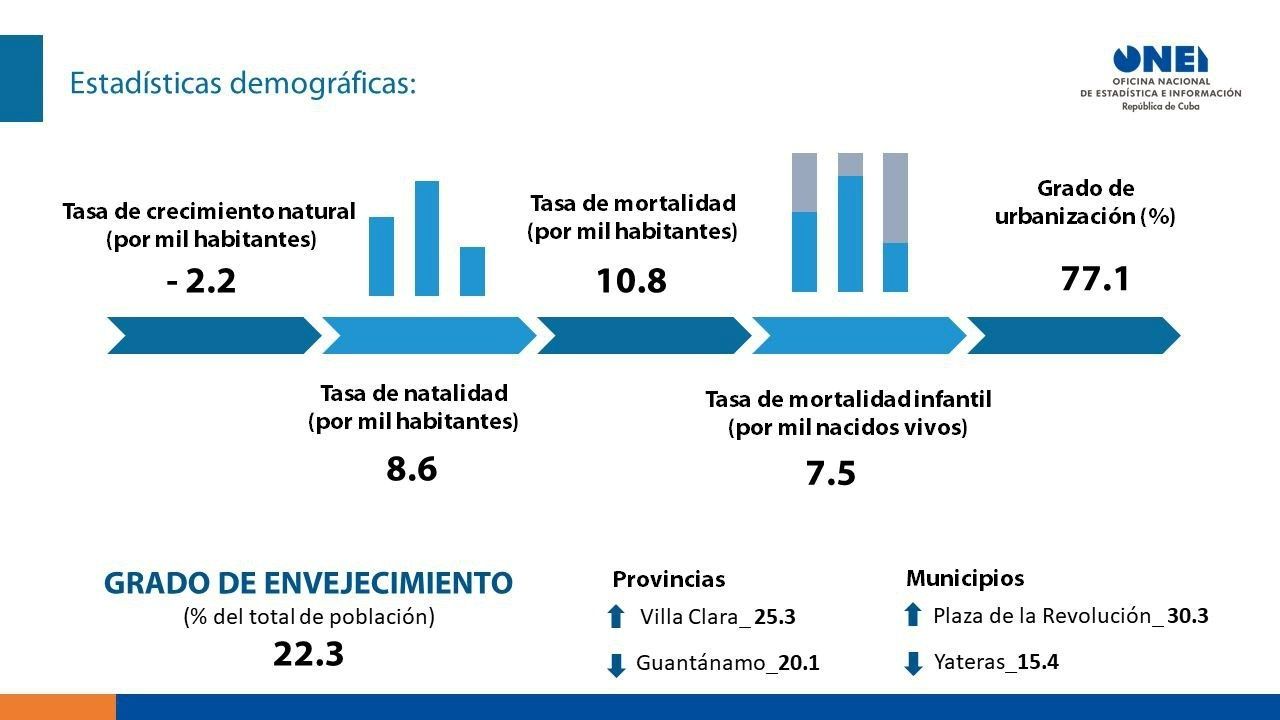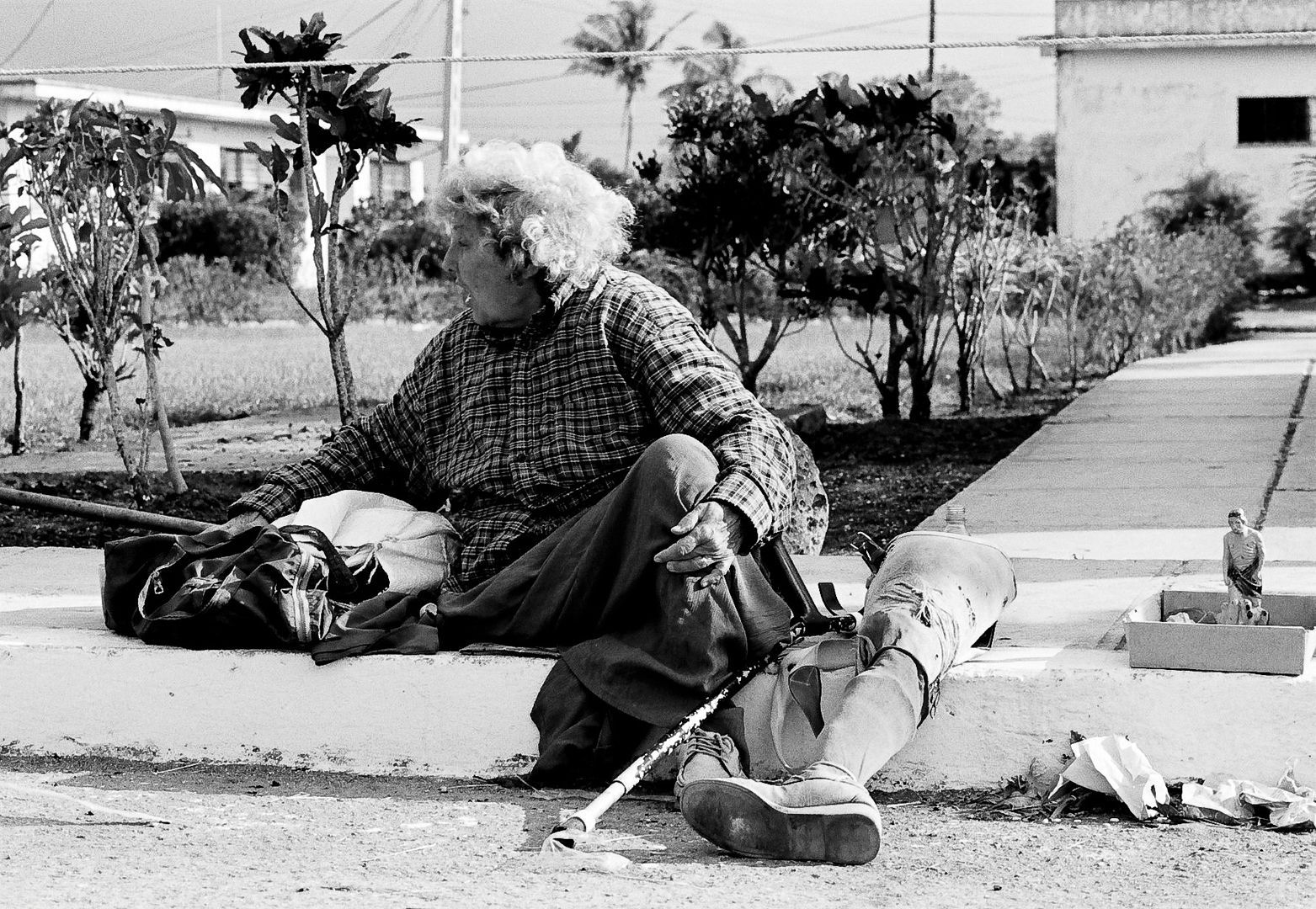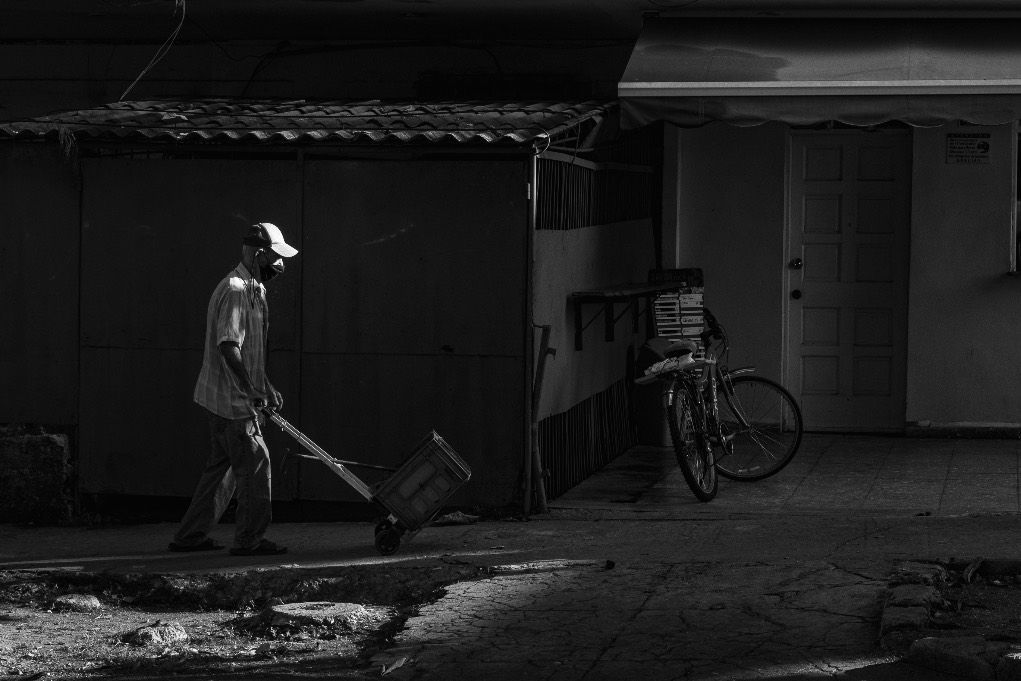Today, my mother takes care of my grandmother. This time, I didn’t have the support of my aunt, regardless, she gets up every morning and draws strength from within although she has none left, and yes, she is still sick. Over time, her condition has worsened considerably; she no longer likes to talk to anyone or leave the house. She stopped caring about her personal appearance long ago, and her own life has been forgotten somewhere. Now, my mother doesn’t dance anymore, hasn’t seen the sea in years, and has lost her excitement about Christmas. Although her lust for life has not yet died, she always says that one day everything will be the same again, if God wills it.*
During 2023, Cuba continued to age, and the latest official statistics indicate that almost 23 percent of Cubans are already over 60 years old. This percentage means that in the island, 2,478,087 people surpass the sixth decade of their lives. Most of these people live in the western and central parts of the country, according to the latest population yearbook from the National Office of Statistics and Information (ONEI).
This trend, also marked by the continuous and progressive decline in fertility in Cuba, with low levels of mortality and an increase in life expectancy, is expected to continue in the coming decades. By 2050, ONEI estimates that Cubans over 60 years old will be well over three million inhabitants, representing 35.9 percent of the total population.
According to ONEI, the country is experiencing a simultaneous reduction in the percentage of people under 15 years old, which is certainly serious since it is related to the persistence, since 1978, of a fertility rate below replacement level—less than one daughter per woman.
Cuba also leads the aging statistics in the Latin American and Caribbean region, according to data from the Economic Commission for Latin America and the Caribbean (ECLAC).

The Greatest Sociodemographic Challenge
My father does not know, cannot remember, perhaps no longer understands that there is no Benadryl in the pharmacy. Nor alprazolam. My father does not know that the pharmacy has been mostly or completely empty for a while now. I don’t think he is aware that it has been very difficult to sustain his consumption of levodopa-carbidopa, a drug that is hard to keep on Cuban shelves. I never told my father that his pills come to me from the northwest of the United States, from a very distant city, thanks to the sensitivity of a friend he does not know, and that they arrive in Havana despite the infinite limitations and obstacles in shipments to the calm, orderly, and fair country he sees in the daily NTV. My father believes that keeping the important announcements from Granma’s newspapers will ensure that the pharmacy will not only have long lines of sleepy and poor people but also an abundance of medicines.*
The population aging in the island is the main socio-demographic challenge of the country, recently asserted before the Cuban official press by Dr. Antonio Aja Díaz, director of the Center for Demographic Studies (CEDEM) at the University of Havana. “It happens that, today, Cuba is the most aged country in Latin America and in the Caribbean since 22.9 percent of the country’s population is over 60 years old,” he emphasized.
Although aging can indicate a higher life expectancy, this process negatively impacts the economic balance of the island and, of course, stresses social protection structures, as expenses in pensions, health, and social assistance increase.
“The underlying problem is not an increase in the population over 60 years old but the absence or unsustainability of social and economic policies, as well as insufficient resources to provide adequate care and social protection in response to the change in age demographics,” emphasizes Elaine Acosta González, executive director of CuidO60. Observatory of Aging, Care, and Rights, in a dialogue with “El Estornudo.”

According to the Cuban sociologist, there are other important questions about the conditions in which Cuba is aging. “If we are the oldest population in Latin America, and in a few years, we will be among the longest-lived in the world,” she warns, “we must ask ourselves under what conditions we are aging, what it means to grow old in Cuba, and what measures the State is going to take to address the impact of this aging because the population’s demographic structure conditions certain investment and budgetary policies.”
In response to these questions, the visiting researcher at the Cuban Institute of Investigations at Florida International University (FIU) indicates, “What we have found and concluded in our studies is that, compared to other countries with a similarly aged population, Cuba is one of the least prepared countries to address these challenges.”
Acosta also argues that the impact of social poverty and inequality is accentuated among Cubans who reach old age, they are much more exposed to the different crises converging in the country today: food shortages, medication deficits, inflation, and consequently, the loss of economic autonomy after the deterioration of pension values and the massive migratory flow that attracts the younger population.
“It is true that in recent years, if you look at the speeches and statements in the official media, this issue has been emerging as an increasingly relevant concern, although it does not mean that the perspective on how it has been addressed has been the most adequate,” argues Acosta, who considers that “the solutions that the Cuban State has been implementing to face what they call ‘the aging dilemma’ are natalist policies, which often do not adequately consider women’s rights.”
The expert considers that these natalist policies “will not reverse the issue of aging in terms of caregiving responsibilities, especially for the elderly, which generally falls on women: daughters, sisters, or wives.”

Exodus and the Care Crisis in Cuba
My grandmother hates goodbyes. But no one is spared from them, especially not in Cuba, the country of endless goodbyes… On that evening of farewells, my grandmother made cornmeal with a fried egg, the food I loved so much as a child. We had lunch together in the courtyard, at the same table where, on a distant day, I learned to read and write. The ghost of old family celebrations also sat with us. Now, my grandmother lives alone, accompanied by memories that dwell within the walls of an old and lonely house. Before leaving, I hugged her with all my strength. In that broken embrace, something in me broke forever.*
Among the main challenges of social policies in Cuba, Elaine Acosta highlights the sustained growth of aging in the coming years and the currently unstoppable migratory crisis that entails, in addition, a deficit in care for the elderly, amid a significant deterioration in the quality of the insufficient services that exist on the island for that population.
“To the material precariousness that the elderly already suffer, is added the weakening of family and social networks, lack of support and care, and higher levels of loneliness,” explains Acosta.

On the other hand, the director of CEDEM believes that “Cuba does not have much alternative, in demographic terms, than to try as much as possible to seek the return of its population abroad, even if temporarily.”
Dr. Aja considers that, although Cuba cannot opt for a policy of massive immigration, “it has to opt for policies that maximize the capacities of its population.”
“Migration is another factor that influences population aging because it affects the age structure, since those who emigrate are usually young people, in full productive and reproductive capacity… If we do not change the mindset on the migration issue, especially in addressing the causes that generate migration, whether internal or external, if we do not change the perception that those who leave do not return, that those who leave are enemies, we will not change substantially,” said the Cuban academic.
Meanwhile, Dr. Elaine Acosta considers that there are other risk factors that are increasing with the current migration and caregiving crisis in Cuba, which are related to emotional, psychological, and social well-being in old age.
Faced with this, she suggests an urgent reconfiguration of the relations between the State and civil society, as a multifactorial intervention is required to promote alliances with different community social actors to develop resilience capacities among these individuals. In the face of the clear withdrawal of the protective role of the Cuban government, non-state care services should be provided.

* Excerpts from testimonials collected in La vejez que nunca esperamos (The old age we never expected), the latest book from CuidO60-Observatory of Aging, Care, and Rights, which portrays and narrates various experiences about aging in Cuba. The volume also provides insight into the impacts and evolution of the social transformation process of the so-called Cuban Revolution, which has also reached its old age.




